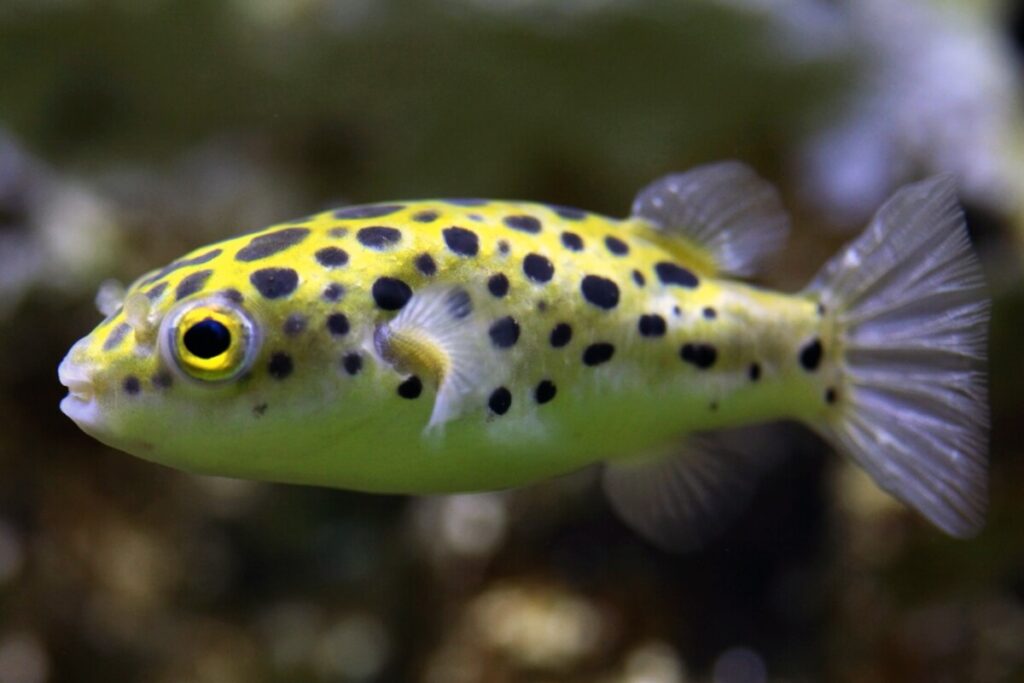- Your cart is empty
- Continue Shopping
Brackish Fish Care Sheet
Half Fresh, Half Salt

Brackish water aquariums are a hybrid between freshwater and marine, sharing characteristics of both. Because they tend to be less expensive to maintain than saltwater aquariums while offering a different experience than the average freshwater setup, more and more hobbyists are choosing them as a unique way to enjoy aquarium keeping. Many fish species typically thought of as freshwater, can be adapted to the brackish aquarium, while some true brackish fish are often sold in the aquarium trade as freshwater fish. Sadly, many true brackish water fish are still collected in the wild and do poorly when kept long term in freshwater aquariums. A brackish water aquarium gives hobbyists the ability to keep these fish properly and enjoy them for many years.
Natural Habitat for Brackish Fish
Brackish water fish are typically found in estuaries where rivers meet the sea, creating habitats that are a mix of fresh and saltwater. Salinity fluctuates in these habitats due to environmental forces and fish and other aquatic organisms often move with changing conditions. In the aquarium, brackish fish do not have this ability, so the aquarist must choose and maintain a certain salt level. Major brackish water environments in the U.S. include the Chesapeake Bay, Mobile Bay and Delaware Bay.
Water Requirements for Brackish Fish
The world’s oceans have an average salinity of 35 parts per thousand or a specific gravity of 1.025, while the specific gravity of freshwater is 1.000. Brackish water environments typically range between 1.005 and 1.012. Use Coralife Marine Salt Mix to create the proper salinity. Brackish water often has a higher pH and alkalinity than freshwater as well. In the brackish aquarium, pH should be maintained between 7.8 and 8.4, with alkalinity between 10° and 20° dKH (180 ppm to 360 ppm). Maintain good filtration and change 10% of the water every week or 25% every 2 weeks using an Aquarium Water Changer or Siphon Vacuum Gravel Cleaner. Don’t forget to treat tap water with Seachem Prime Water Conditioner and mix sea salt to the proper concentration before refilling your aquarium!
Housing Recommendations for Brackish Fish
Almost any sized aquarium can be used for a brackish habitat, although larger aquariums hold more fish and are easier to maintain. A minimum size of 20 gallons is recommended. Use crushed coral gravel or coral sand for the substrate to help maintain the correct pH and alkalinity. Decorations can include virtually any non-living freshwater or marine-oriented items. Driftwood should be used sparingly if at all, as certain types can lower pH and alkalinity. Since most freshwater plants do not tolerate such high salt concentrations, artificial plants are the best choice. Provide adequate cover for shy fish, along with ample swimming space for active fish.
Brackish Fish Behavior/Compatibility
Make sure the fish you purchase are similar in size and temperament to the fish already in your aquarium. Puffers and scats can be aggressive fin nippers, and datnoids, archerfish and Colombian sharks get extremely large and are predatory.
The following is a list of true brackish water fish that are available in aquarium shops:
Knight Goby Figure 8 Puffer Green Scat
Skunk Goby Spotted Puffer Red Scat
Bumble Bee Goby Fugu Puffer Silver Scat
Butterfly Leaf Goby Ceylon Puffer Colombian Shark Catfish
Mono Sebae Golden Puffer Target Fish
Mono Argentus Archer Fish Datnoid
American Flagfish Indian Glassfish Green or Orange Chromide
Freshwater fish that can be adapted to brackish water:
Fancy Guppies Regular and Sailfin Mollies
When purchasing brackish water fish, ask if they are housed in fresh or brackish water in the store. If kept in freshwater, acclimate them in a bucket over several hours using a drip line. Gently aerate the bucket to avoid oxygen depletion.
What Do Brackish Fish Eat?
Brackish water fish tend to be opportunistic in nature. Provide a varied diet, but always research the dietary needs of any fish you purchase. For best results, feed a combination of bloodworms and always feed clams and live snails on occasion to help file their constantly growing teeth or they will die. Live and frozen foods can be fed to all brackish water fish as treats. For best results, rotate your fish’s diet daily and feed only what they can consume in 2 to 3 minutes, once or twice a day.
Brackish Fish Breeding Level – Difficult
With the exception of mollies, guppies and chromide cichlids, breeding of brackish water fish is beyond the scope of most home aquarists.


